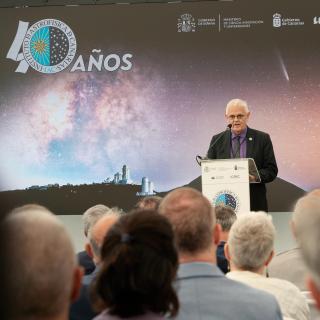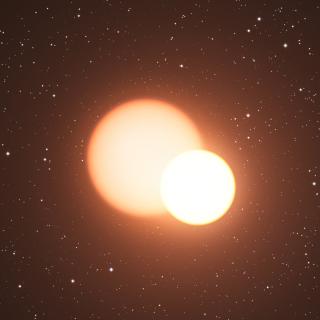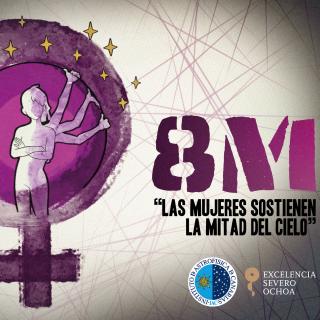It may interest you
-
 El Instituto de Astrofísica de Canarias (IAC) ha celebrado, este jueves 24 de julio de 2025, el 40 aniversario de la inauguración oficial de su sede central y de sus dos observatorios. Un acto que ha estado centrado en destacar el trabajo de los cientos de personas que han contribuido a convertir el IAC en uno de los centros de excelencia investigadora y técnica más importantes del mundo. En el acto, el director fundador del IAC, Francisco Sánchez, ha tenido un papel fundamental pese a que sus problemas de salud no le hayan permitido participar en el mismo. El lema de este 40 aniversario haAdvertised on
El Instituto de Astrofísica de Canarias (IAC) ha celebrado, este jueves 24 de julio de 2025, el 40 aniversario de la inauguración oficial de su sede central y de sus dos observatorios. Un acto que ha estado centrado en destacar el trabajo de los cientos de personas que han contribuido a convertir el IAC en uno de los centros de excelencia investigadora y técnica más importantes del mundo. En el acto, el director fundador del IAC, Francisco Sánchez, ha tenido un papel fundamental pese a que sus problemas de salud no le hayan permitido participar en el mismo. El lema de este 40 aniversario haAdvertised on -
 An international team of astronomers, including researchers from the IAC, have performed a unique cosmic test - measuring the mass of an ancient star using two entirely different methods, finding agreement to within just 1.4%. This result marks a milestone in our ability to determine the ages of old stars and use them as living fossils to study the Milky Way’s distant past. The team analysed the red giant in the binary system KIC 10001167 using two independent approaches: firstly, by measuring the brightness and radial velocity variations due to the orbital motion of the binary, and secondlyAdvertised on
An international team of astronomers, including researchers from the IAC, have performed a unique cosmic test - measuring the mass of an ancient star using two entirely different methods, finding agreement to within just 1.4%. This result marks a milestone in our ability to determine the ages of old stars and use them as living fossils to study the Milky Way’s distant past. The team analysed the red giant in the binary system KIC 10001167 using two independent approaches: firstly, by measuring the brightness and radial velocity variations due to the orbital motion of the binary, and secondlyAdvertised on -
 The Instituto de Astrofísica de Canarias (IAC) is strengthening its commitment to Equality and, to coincide with the commemoration of March 8th, International Women’s Day, is presenting its IV Plan for Equality. This document covers the active work within the IAC to support Equality and Fairness in the working and institutional environment, and proposes specific measures to ensure that both of these aims are achieved. The IAC has pioneered the introduction of policies of Equality in the field of science in Spain. Even before the approval of the Organic Law 3/2007 for the effective equalityAdvertised on
The Instituto de Astrofísica de Canarias (IAC) is strengthening its commitment to Equality and, to coincide with the commemoration of March 8th, International Women’s Day, is presenting its IV Plan for Equality. This document covers the active work within the IAC to support Equality and Fairness in the working and institutional environment, and proposes specific measures to ensure that both of these aims are achieved. The IAC has pioneered the introduction of policies of Equality in the field of science in Spain. Even before the approval of the Organic Law 3/2007 for the effective equalityAdvertised on
